The packing list was created from decades of Grand Canyon rafting experience, please follow it (even a fleece in summer!). You will be traveling through remote wilderness areas with the possibility of extreme, unpredictable weather and large temperature swings. As your trip approaches, we recommend checking the weather in the canyon at Phantom Ranch. Follow the packing list below, and use the forecast to determine the need for extra warm or cold weather items. Remember, it is better to have and not need, than to need and not have. Being prepared goes a long way towards an enjoyable trip. For those of you flying to the area, we suggest carrying absolute river necessities in a carry-on bag. It is tough to get things together if your luggage is lost by the airline.
Note: It is very important to keep your weight to a minimum to make the hike less difficult. You must limit your gear to 25 lbs or less. Find many of these items in our online store and check out our blog for more insider info.
Packing List
Required
- Small internal-frame backpack, 35-44 liters or smaller, with hip belt to carry your personal gear and water during your 8-mile Grand Canyon hike
- Waterproof rain jacket with hood & rain pants — a poncho is not effective
- Water containers: Nalgene-style water bottle to use on the river and a hydration bladder for the hike. You need to have two liters capacity total for the hike.
- River shoes to use on rafts, hiking shoes for your hike; see Footwear section
Clothing
- Shirts: 1 for every few days, quick-dry material
- At least 1 long-sleeved shirt for sun protection
- Clothes for camp/sleeping: camp skirt/dress can make urinating more private
- 1-2 swimsuits: 2-piece is easier, or sports bra and quick-dry shorts
- Shorts: 1 for every few days, quick-dry material
- Fleece jacket
- 1 pair long pants: for sun protection, lightweight and quick-dry material
- Underwear
- Socks: several pairs for sun protection and to prevent/heal blisters, synthetic or wool
- Bandana and/or sarong: for dipping in the river to keep cool and for sun protection
- Hat with retention strap and good brim
- If trip is April/May or Sept./Oct., pack additional items in Early/Late Season Clothes section below
Personal Items
- Small travel towel (hand towel or sarong works too)
- Toiletries – Toothbrush/paste, deodorant, biodegradable soap, brush/comb, etc.
- Headlamp (red light is handy) and fresh batteries
- Small backpack for hands-free hiking
- Medications and/or personal first-aid items
- Prescription glasses or daily contacts: backup glasses or eye drops are recommended
- Sunglasses with retention strap: may be wise to bring a spare pair
- Insect repellent: small size
- Chapstick with SPF
- Sunscreen: large size or more than one; be prepared for very strong sun
- Body moisturizer: large size to prevent cracked skin
- Personal & feminine hygiene products (remember to pack for the unexpected)
- Baby wipes for easy bathing
- 2 carabiners: handy for clipping water bottles and other items to raft
- Camera (or phone on airplane mode) with a waterproof case, spare batteries, and charger
- Cash or blank check for gratuities at the end of the trip: common gratuity is 8-10% of the total trip cost. You will NOT be able to tip with a card nor cash app like Venmo. See Tipping section below.
- Pared-down wallet with ID, credit/debit card, and health insurance card
Optional Extra Items
- Hiking poles
- Alcohol, see Beverages Section in What You Need to Know Section
- Belknap Grand Canyon River Guide
- Female urination device
- Book, playing cards, small musical instrument, flip-flops, Frisbee, gloves, koozie, fishing gear, earplugs (for light sleepers), etc.
What We Provide
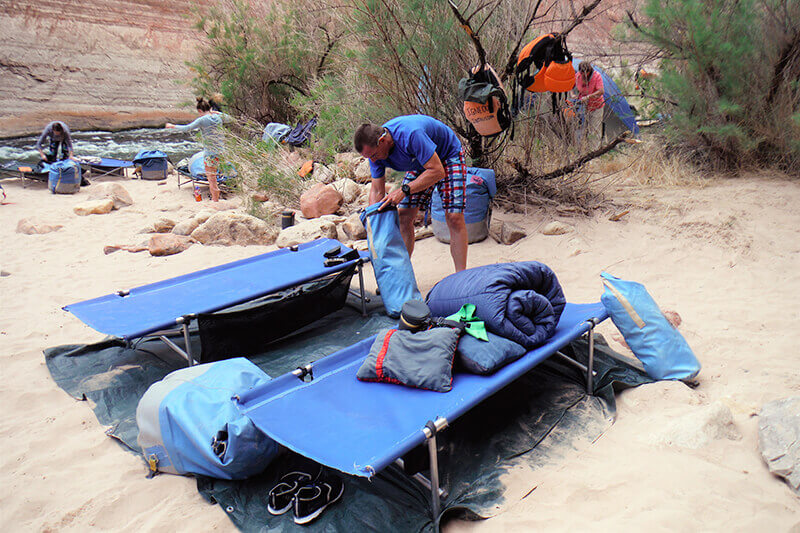
- Custom-made rafts and experienced guides
- Coast Guard-approved whitewater personal flotation device (PFD)
- All meals prepared by guides and snacks throughout the day
- Kitchen facilities, dishware, and a mug for each person
- Camping toilet facilities, toilet paper, and supplies
- Unlimited drinking water, assorted soda, and electrolyte mix are always available
- Coffee, tea, and hot chocolate are available at breakfast only
- First-aid kit
- Sleeping bag, sheet, and small pillow
- Sleeping cot (on trips leaving after September 15th, we’ll provide a sleeping pad)
- Two-person tent and ground tarp, sharing not required
- Large dry bag (accessible only in camp) for the provided sleeping gear and your duffel bag
- Personal daytime dry bag (accessible at all times) – 7” diameter and 14” tall when sealed
- Camp chairs
- Community dry bag for hiking shoes (accessible before side hikes)
Packing List Explained
Grand Canyon rafting is a unique adventure. Once we embark into the canyon, we are self-sufficient and self-contained for the duration of the trip. This means packing well is important as there are no stores to supplement things you may have forgotten. We have put a great amount of thought and care into our packing list, and we ask that you trust our experience!
Footwear
 Investing in a good pair of river sandals/shoes is crucial to navigating the various slippery surfaces you’ll encounter. “Aqua socks” are not a good option. Getting on and off the rafts can be surprisingly challenging as the rafts are often moving and the side tubes can be extremely slippery. To help maneuver on these surfaces your river shoes should have grippy tread and attach securely to your foot with laces/straps. For optimal comfort make sure your shoes are broken in before the trip as you’ll be spending a majority of each day in these shoes. River sandals tend to be the most popular choice as they have all of these features and are great for the numerous side hikes on unmaintained backcountry trails which may be through water. Amphibious shoes are another good choice as they provide toe protection in addition to traction in both wet and dry conditions. We recommend Chaco, Keen, Bedrock, or Merrell for excellent river sandals/shoes.
Investing in a good pair of river sandals/shoes is crucial to navigating the various slippery surfaces you’ll encounter. “Aqua socks” are not a good option. Getting on and off the rafts can be surprisingly challenging as the rafts are often moving and the side tubes can be extremely slippery. To help maneuver on these surfaces your river shoes should have grippy tread and attach securely to your foot with laces/straps. For optimal comfort make sure your shoes are broken in before the trip as you’ll be spending a majority of each day in these shoes. River sandals tend to be the most popular choice as they have all of these features and are great for the numerous side hikes on unmaintained backcountry trails which may be through water. Amphibious shoes are another good choice as they provide toe protection in addition to traction in both wet and dry conditions. We recommend Chaco, Keen, Bedrock, or Merrell for excellent river sandals/shoes.
Ideally, you should bring 1 pair of river sandals/ shoes, 1 pair of hiking or tennis/athletic shoes, 1 pair of flip-flops to wear in camp, and several pairs of socks. For your 8-mile hike, some prefer above-ankle hiking boots while others like lighter trail running shoes. Lean on your own experience to make this choice. Your hiking shoes don’t need to fit in your duffel, they can be stored in the community shoe bag that will be accessible during the day. Flip-flops or Crocs are nice to bring so you can give your feet a break and switch out of wet, sandy river shoes once you’re at camp for the evening. Watch out for blisters and sore spots due to rubbing and abrasive sand under the river shoe straps. Socks are a great way to help combat these issues, protect your feet from the sun, and keep them happy. Look for socks that are synthetic or wool instead of cotton. If you tend to run cold, wool socks can also help as they maintain heat when wet, or consider bringing neoprene booties/socks. Having proper footwear goes a long way towards an enjoyable trip!
Rain Gear
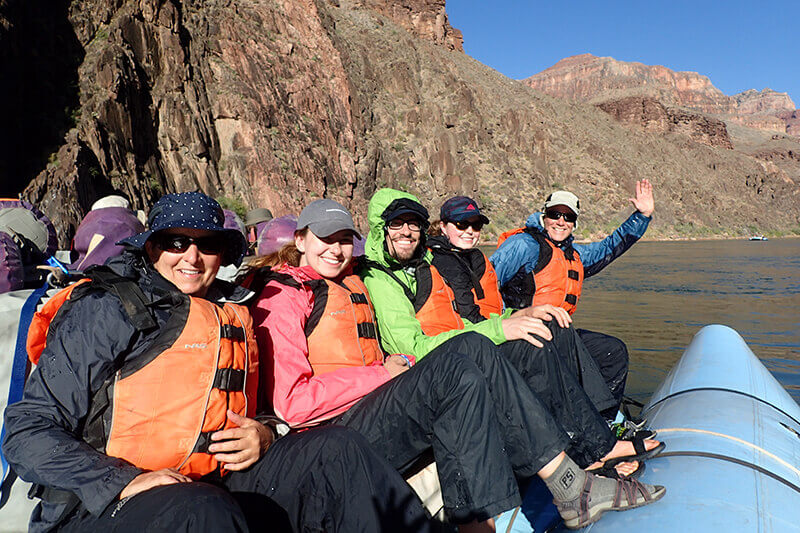 It is important to have a quality rain jacket with a hood and rain pants. Because the river is very cold year-round, you’ll use rain gear as a splash guard from the rapids. Even on the hottest days, guests often wear rain gear in the morning, while going through rapids, and in the shade of the canyon walls. Make sure your rain gear is waterproof, not just water-resistant. Rain gear with the ability to cinch at the neck and wrists works well. A poncho is not effective. Do NOT go on your river trip without rain gear!
It is important to have a quality rain jacket with a hood and rain pants. Because the river is very cold year-round, you’ll use rain gear as a splash guard from the rapids. Even on the hottest days, guests often wear rain gear in the morning, while going through rapids, and in the shade of the canyon walls. Make sure your rain gear is waterproof, not just water-resistant. Rain gear with the ability to cinch at the neck and wrists works well. A poncho is not effective. Do NOT go on your river trip without rain gear!
Clothing
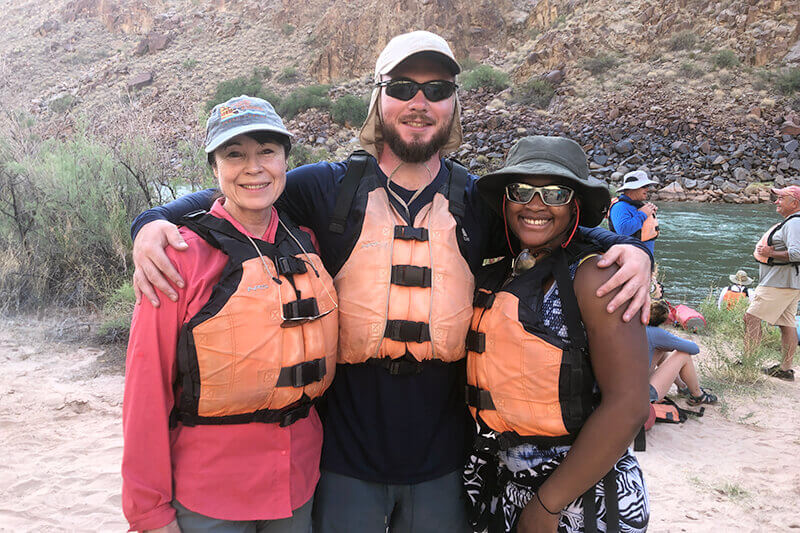 You will pack your duffel bag in our waterproof bags when you get to the river. Quick-drying clothing is highly recommended. Many of our guides wear long-sleeved shirts every day for sun protection. If it is overcast, it can turn chilly, so pack a fleece jacket to wear under your rain gear, no matter the time of year. You do not need a change of clothes for every day; many people wear the same outfit for several days. Follow the packing list and remember “less is more!”
You will pack your duffel bag in our waterproof bags when you get to the river. Quick-drying clothing is highly recommended. Many of our guides wear long-sleeved shirts every day for sun protection. If it is overcast, it can turn chilly, so pack a fleece jacket to wear under your rain gear, no matter the time of year. You do not need a change of clothes for every day; many people wear the same outfit for several days. Follow the packing list and remember “less is more!”
Early/Late Season Clothes
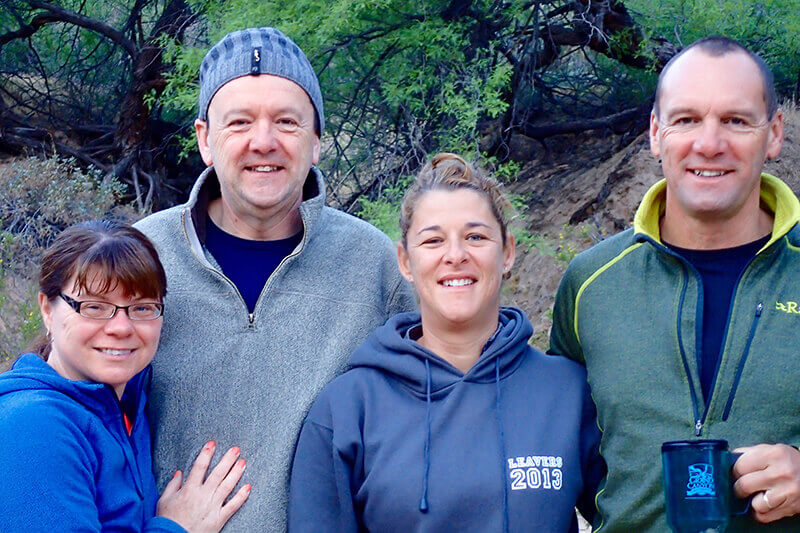 If your trip is in the early or late season (April/May or September/October), it is very important to bring additional warm clothing. These months tend to have cooler temperatures, cloudy skies, and the potential for storms. In addition to the items on the packing list, we recommend bringing layers including long underwear, fleece/warm pants, warm hat and gloves, warm socks, and neoprene socks/booties. Layering clothing under waterproof rain gear works well as being splashed by rapids on the river can make it feel much colder. We recommend having an additional set of warm, dry clothes, and maybe a puffy jacket for camp. We strongly suggest you bring these items and be happy if you don’t have to use them!
If your trip is in the early or late season (April/May or September/October), it is very important to bring additional warm clothing. These months tend to have cooler temperatures, cloudy skies, and the potential for storms. In addition to the items on the packing list, we recommend bringing layers including long underwear, fleece/warm pants, warm hat and gloves, warm socks, and neoprene socks/booties. Layering clothing under waterproof rain gear works well as being splashed by rapids on the river can make it feel much colder. We recommend having an additional set of warm, dry clothes, and maybe a puffy jacket for camp. We strongly suggest you bring these items and be happy if you don’t have to use them!
Tipping Your Guides
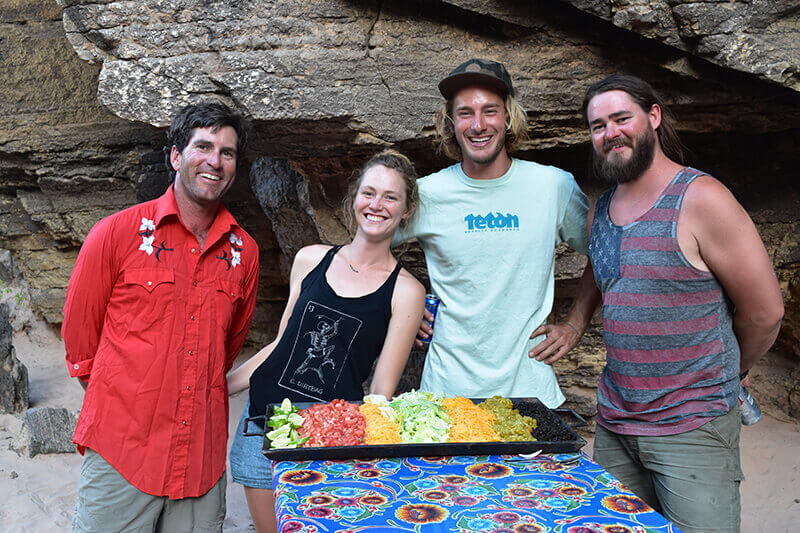 It is customary, upon receiving a satisfactory experience, to tip the river guides. It is an acknowledgement of a job well done and is greatly appreciated by the crew members. A common tip is 8-10% of the total river trip cost. You may leave cash or a check (bring a blank one to fill out on the river) with the trip leader, who will distribute it evenly among the crew. Please come prepared as you will NOT be able to tip with a credit/debit card nor apps like Venmo.
It is customary, upon receiving a satisfactory experience, to tip the river guides. It is an acknowledgement of a job well done and is greatly appreciated by the crew members. A common tip is 8-10% of the total river trip cost. You may leave cash or a check (bring a blank one to fill out on the river) with the trip leader, who will distribute it evenly among the crew. Please come prepared as you will NOT be able to tip with a credit/debit card nor apps like Venmo.

































